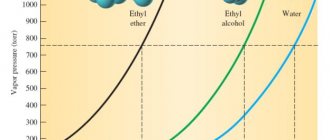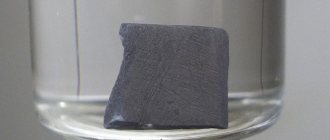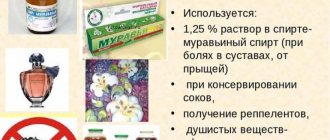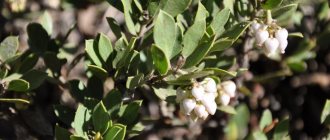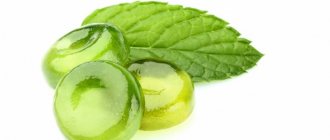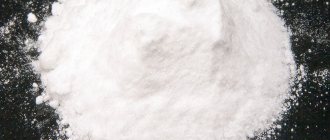Phenol (hydroxybenzene, carbolic acid) is an organic aromatic compound with the formula C6H5OH. Belongs to the class of the same name - phenols.
In turn, phenols
- this is a class of organic compounds of the aromatic series, in
the molecules of which the hydroxyl groups OH - are connected to atoms of the aromatic ring.
Based on the number of hydroxyl groups, they are distinguished:
- monohydric phenols (arenols): phenol and its homologues;
- diatomic phenols (arenediols): pyrocatechin, resorcinol, hydroquinone;
- triatomic phenols (arenetriols): pyrogallol, hydroxyhydroquinone, phloroglucinol;
- polyhydric phenols.
Accordingly, phenol itself, as a substance, is the simplest representative of the phenol group and has one aromatic ring and one hydroxyl group OH .
Chemical properties
What is Phenol? Hydroxybenzene, what is it? According to Wikipedia, this is one of the simplest representatives of its class of aromatic compounds. Phenols are organic aromatic compounds in whose molecules carbon atoms from the aromatic ring are attached to the hydroxyl group. General formula of Phenols: C6H6n(OH)n. According to standard nomenclature, organic substances of this series are distinguished by the number of aromatic nuclei and OH groups. There are monoatomic arenoles and homologues, diatomic arenediols, terchatom arenetriols and polyatomic formulas. Phenols also tend to have a number of spatial isomers. For example, 1,2-dihydroxybenzene ( pyrocatechol ), 1,4-dihydroxybenzene ( hydroquinone ) are isomers.
Alcohols and phenols differ from each other by the presence of an aromatic ring. Ethanol is a homologue of methanol. Unlike phenol, methanol interacts with aldehydes and enters into esterification reactions. The statement that methanol and phenol are homologues is incorrect.
If we consider in detail the structural formula of Phenol, we can note that the molecule is a dipole. In this case, the benzene ring is the negative end, and the OH group is the positive end. The presence of a hydroxyl group causes an increase in electron density in the ring. The lone pair of oxygen electrons enters into conjugation with the pi-system of the ring, and the oxygen atom is characterized by sp2 hybridization. Atoms and atomic groups in a molecule have a strong mutual influence on each other, and this is reflected in the physical and chemical properties of substances.
Physical properties. The chemical compound has the form of colorless needle-shaped crystals that turn pink in air because they are susceptible to oxidation. The substance has a specific chemical odor, it is moderately soluble in water, alcohols, alkali, acetone and benzene. Molar mass = 94.1 grams per mole. Density = 1.07 g per liter. Crystals melt at 40-41 degrees Celsius.
What does Phenol interact with? Chemical properties of Phenol. Due to the fact that the molecule of the compound contains both an aromatic ring and a hydroxyl group, it exhibits some properties of alcohols and aromatic hydrocarbons.
How does the OH group react? The substance does not exhibit strong acidic properties. But it is a more active oxidizing agent than alcohols; unlike ethanol, it interacts with alkalis to form phenolate salts. Reaction with sodium hydroxide : C6H5OH + NaOH → C6H5ONa + H2O. The substance reacts with sodium (metallic): 2C6H5OH + 2Na → 2C6H5ONa + H2.
Phenol does not react with carboxylic acids. Esters are obtained by reacting phenolate salts with acid halides or acid anhydrides. The reaction of formation of ethers is not typical for the chemical compound. Esters form phenolates when exposed to haloalkanes or halogenated arenes. Hydroxybenzene reacts with zinc dust, and the hydroxyl group is replaced by H; the reaction equation is as follows: C6H5OH + Zn → C6H6 + ZnO.
Chemical interaction on the aromatic ring. The substance is characterized by reactions of electrophilic substitution, alkylation, halogenation, acylation, nitration and sulfonation. Of particular importance is the synthesis reaction of salicylic acid: C6H5OH + CO2 → C6H4OH(COONa), occurs in the presence of a sodium hydroxide . Then, when exposed to hydrochloric acid, salicylic acid is formed .
The reaction with bromine water is a qualitative reaction to Phenol. C6H5OH + 3Br2 → C6H2Br2OH + 3HBr. Bromination produces a white solid, 2,4,6-tribromophenol . Another qualitative reaction is with ferric chloride 3 . The reaction equation is as follows: 6C6H5OH + FeCl3 → (Fe(C6H5OH)6)Cl3.
Phenol nitration reaction: C6H5OH + 3HNO3 → C6H2(NO2)3OH + 3 H2O. The substance is also characterized by an addition reaction (hydrogenation) in the presence of metal catalysts, platinum, aluminum oxide, chromium, and so on. As a result, cyclohexanol and cyclohexanone .
A chemical compound undergoes oxidation. The stability of the substance is significantly lower than that of benzene. Depending on the reaction conditions and the nature of the oxidizing agent, different reaction products are formed. Under the influence of hydrogen peroxide in the presence of iron, diatomic phenol is formed; under the action of manganese dioxide , chromium mixture in an acidified environment - para-quinone.
Phenol reacts with oxygen, combustion reaction: C6H5OH +7O2 → 6CO2 + 3H2O. Also of particular importance for industry is the polycondensation reaction with formaldehyde (for example, methanal ). The substance enters into a polycondensation reaction until one of the reactants is completely consumed and huge macromolecules are formed. The result is solid polymers, phenol-formaldehyde or formaldehyde resins . Phenol does not interact with methane.
Receipt. At the moment, several methods for the synthesis of hydroxybenzene exist and are actively used. The cumene method for producing phenol is the most common of them. About 95% of the total production volume of the substance is synthesized in this way. cumene undergoes non-catalytic oxidation with air and cumene hydroperoxide . The resulting compound decomposes under the action of sulfuric acid into acetone and phenol. An additional byproduct of the reaction is alpha-methylstyrene .
The compound can also be obtained by the oxidation of toluene ; the intermediate product of the reaction will be benzoic acid . Thus, about 5% of the substance is synthesized. All other raw materials for various needs are isolated from coal tar.
How to obtain from benzene? Phenol can be produced by the direct oxidation of benzene with NO2 ( nitrous oxide ) followed by acidic decomposition of sec-butylbenzene hydroperoxide . How to obtain phenol from chlorobenzene? this chemical compound from chlorobenzene The first is a reaction with an alkali, for example, with sodium hydroxide . As a result, phenol and table salt are formed. The second is a reaction with water vapor. The reaction equation is as follows: C6H5-Cl + H2O → C6H5-OH + HCl.
Obtaining benzene from phenol. To do this, you first need to treat benzene with chlorine (in the presence of a catalyst), and then add an alkali (for example, NaOH) to the resulting compound. As a result, phenol and sodium chloride .
The conversion of methane - acetylene - benzene - chlorobenzene can be carried out as follows. First, the reaction of methane decomposition at a high temperature of 1500 degrees Celsius to acetylene (C2H2) and hydrogen is carried out. benzene under special conditions and high temperature . Chlorine is added to benzene in the presence of a FeCl3 catalyst, chlorobenzene and hydrochloric acid are obtained: C6H6 + Cl2 → C6H5Cl + HCl.
One of the structural derivatives of Phenol is the amino acid tyrosine , which has important biological significance. This amino acid can be considered as para-substituted phenol or alpha-substituted para-cresol . Cresols are quite common in nature, along with polyphenols. Also, the free form of the substance can be found in some microorganisms in equilibrium with tyrosine .
Hydroxybenzene is used:
- in the production of bisphenol A , epoxy resin and polycarbonate ;
- for the synthesis of phenol-formaldehyde resins, nylon, nylon;
- in the oil refining industry, for the selective purification of oils from aromatic sulfur compounds and resins;
- in the production of antioxidants, surfactants, cresols , drugs. drugs, aspirin , pesticides and antiseptics;
- in medicine as an antiseptic and analgesic for local use;
- as a preservative in the manufacture of vaccines and smoked food products, in cosmetology during deep peeling;
- for disinfection of animals in cattle breeding.
Hazard Class. Phenol is an extremely toxic, poisonous, caustic substance. When a volatile compound is inhaled, the functioning of the central nervous system is disrupted; the vapors irritate the mucous membranes of the eyes, skin, and respiratory tract and cause severe chemical burns. Upon contact with the skin, the substance is quickly absorbed into the bloodstream and reaches the brain tissue, causing paralysis of the respiratory center. The lethal dose when taken orally for an adult ranges from 1 to 10 grams.
Preparation and production of phenol
Currently, the production of phenol on an industrial scale is carried out in the following ways:
Cumene method for producing phenol
Cumene method. More than 95% of all phenol produced in the world is obtained in this way. In a cascade of bubble columns, cumene is subjected to non-catalytic oxidation by air to form cumene hydroperoxide (CHP). The resulting CHP, catalyzed by sulfuric acid, decomposes to form phenol and acetone. In addition, α-methylstyrene is a valuable by-product of this process.
Pharmacodynamics and pharmacokinetics
The product exhibits bactericidal activity against aerobic bacteria, their vegetative forms and fungi. Has virtually no effect on fungal spores. The substance interacts with the protein molecules of microbes and leads to their denaturation. Thus, the colloidal state of the cell is disrupted, its permeability increases significantly, and redox reactions are disrupted.
In aqueous solution it is an excellent disinfectant. When using a 1.25% solution, practically microorganisms die within 5-10 minutes. Phenol, in a certain concentration, has a cauterizing and irritating effect on the mucous membrane. The bactericidal effect of using the product increases with increasing temperature and acidity.
When it comes into contact with the surface of the skin, even if it is not damaged, the medicine is quickly absorbed and penetrates the systemic bloodstream. Upon systemic absorption of the substance, its toxic effect is observed, mainly on the central nervous system and the respiratory center in the brain. About 20% of the dose taken is subject to oxidation; the substance and its metabolic products are excreted through the kidneys.
Benzene ring reactions
The presence of a hydroxyl substituent greatly facilitates the occurrence of electrophilic substitution reactions in the benzene ring.
1. Bromination of phenol.
Unlike benzene, the bromination of phenol does not require the addition of a catalyst (iron (III) bromide). In addition, the interaction with phenol proceeds selectively: bromine atoms are directed to the ortho and para positions, replacing the hydrogen atoms located there. The selectivity of substitution is explained by the features of the electronic structure of the phenol molecule discussed above.
Thus, when phenol reacts with bromine water, a white precipitate of 2,4,6-tribromophenol is formed:
Indications for use
Application of Phenol:
- for disinfection of instruments and linen and disinsection;
- as a preservative in some medications. products, vaccines, suppositories and serums;
- for superficial pyoderma , folliculitis , phlyctene , ostiofolliculitis , sycosis , streptococcal impetigo ;
- for the treatment of inflammatory diseases of the middle ear, oral cavity and pharynx, tonsillitis , pharyngitis , stomatitis , periodontitis , genital warts .
Principles of first aid
The first thing to do is to interrupt human contact with the poisonous source.
Take the victim out of the room into fresh air, unfasten buttons, locks, and zippers to better ensure access to oxygen.
If the phenol solution gets on your clothing, remove it immediately. Rinse the affected skin and mucous membranes of the eyes thoroughly and repeatedly with running water.
If phenol gets into your mouth, do not swallow anything, but immediately rinse your mouth for 10 minutes. If the substance has managed to enter the stomach, you can drink the sorbent with a glass of water:
- activated or white carbon;
- enterosorb;
- enterosgel;
- sorbex;
- carbolene;
- polysorb;
- lactofiltrum.
Phenol antidote is a solution of calcium gluconate for intravenous administration. In case of poisoning of any severity, the victim is taken to the hospital for observation and treatment.
In case of severe poisoning, phenol can be removed from the body in a hospital setting using the following methods:
- Hemosorption is the purification of blood with a special sorbent that binds molecules of a toxic substance. The blood is purified by passing through a special apparatus.
- Detoxification therapy is the intravenous infusion of solutions that dilute the concentration of a substance in the blood and promote its natural elimination from the body (through the kidneys).
- Hemodialysis is indicated in severe cases where there is a potential threat to life. The procedure is carried out using an “artificial kidney” apparatus, in which the blood passes through special membranes and leaves molecules of a toxic substance. Blood returns to the body clean and saturated with useful microelements.
Phenol is a synthetic toxic substance that is dangerous to humans. Even a naturally occurring compound can be harmful to health. To avoid poisoning, it is necessary to responsibly work in production where there is a risk of contact with poison. When shopping, be interested in the composition of the products. The unpleasant smell of plastic products should alert you. When using medications containing phenol, follow the prescribed dosage.
Instructions for use (Method and dosage)
Preservation of drugs, serums and vaccines is carried out using 0.5% Phenol solutions.
For external use, the medicine is used in the form of an ointment. The drug is applied in a thin layer to the affected areas of the skin several times a day.
In the treatment of otitis media, the substance is used in the form of a 5% solution in glycerin . The drug is heated and 10 drops are instilled into the affected ear for 10 minutes. Then you need to remove the remaining medication using cotton wool. The procedure is repeated 2 times a day for 4 days.
Phenol preparations for the treatment of ENT diseases are used in accordance with the recommendations in the instructions. The duration of therapy is no more than 5 days.
To eliminate genital warts, they are treated with a 60% Phenol solution or a 40% tricresol . The procedure is carried out once every 7 days.
When disinfecting linen, use 1-2% soap-based solutions. Using a soap-phenolic solution, treat the room. Phenolic-turpentine and kerosene mixtures are used for disinsection.
Notes
- ↑
- Binas
- Yaushev R. G., Usmanov R. M.
Intensification of the process of selective purification of oils with phenol. - M.: TsNIITEneftekhim, 1988. - 76 p. - (Oil refining). - s:Hygienic standards GN 2.2.5.1313-03. “Maximum permissible concentrations (MPC) of harmful substances in the air of the working area”
- s: Hygienic standards GN 2.1.6.1338-03. “Maximum permissible concentrations (MPC) of pollutants in the atmospheric air of populated areas”
- s: Hygienic standards GN 2.1.5.1315-03. “Maximum permissible concentrations (MAC) of chemical substances in water of water bodies for domestic, drinking and cultural water use”
- Emergency care for acute poisoning. Handbook of toxicology. Ed. Golikova S. N. - M.: Medicine, 1977. - P. 174.
Overdose
When the substance gets on the skin, a burning sensation, redness of the skin, and anesthesia of the affected area occur. The surface is treated with vegetable oil or polyethylene glycol . Symptomatic therapy is carried out.
Symptoms of Phenol poisoning if ingested. Severe pain in the abdomen, pharynx, and oral cavity is observed, the victim vomits a brown mass, pale skin, general weakness and dizziness , miosis , collapse , drop in body temperature, convulsions, coma , acute liver failure. As therapy, the stomach is washed with vegetable oil with the addition of proteins, then the victim is given a 10% glycerol and activated carbon . magnesium oxide and calcium gluconate , forced diuresis, sodium thiosulfate indicated shock is treated .
Maximum permissible concentrations (MPC) of phenol:
- MPCr.z. = 1 mg/m³
- MPCr.s. = 0.3 mg/m³
- MPCm.r. = 0.01 mg/m³
- MPCs.s. = 0.003 mg/m³
- MPCv. = 0.001 mg/l.
Once on the skin, phenol is very quickly absorbed even through intact areas and within a few minutes begins to affect brain tissue. First, short-term excitement occurs, and then paralysis of the respiratory center. Even when exposed to minimal doses of phenol, sneezing, coughing, headache, dizziness, pallor, nausea, and loss of strength are observed. Severe cases of poisoning are characterized by unconsciousness, cyanosis, difficulty breathing, insensitivity of the cornea, rapid, barely perceptible pulse, cold sweat, and often convulsions. The lethal dose for humans when ingested is 1-10 g, for children 0.05-0.5 g [9].
special instructions
Phenol has the ability to be adsorbed by food products.
The product should not be used on large areas of skin.
Before using the substance to disinfect household items, they must be mechanically cleaned, since the product is absorbed by organic compounds. After treatment, things can retain a specific odor for a long time.
The chemical compound cannot be used to treat premises for storing and preparing food products. It does not affect the color or structure of the fabric. Damages varnished surfaces.
"Phenolic" houses
This incident is partly similar to the famous incident in Kramatorsk, Ukrainian SSR. The main difference is that the deadly particles ended up in a prefabricated house in the Donetsk region due to a disastrous logistics error: the rubble contained an ampoule of cesium-137, lost in a quarry several years earlier. In six years, radiation killed six people.
The problem of “phenolic” houses arose differently. In the early 1970s, the resettlement of communal apartments was underway - as many nine-story buildings as possible had to be built in record time. Scientists relied on chemistry as the science of the future: new plastics, types of glue, and sealants appeared. Everything is based on phenol-formaldehyde resins. Some engineers made proposals on how to reduce construction time and reduce the cost. This is how an experiment was conducted with phenol-formaldehyde in concrete. The solution began to harden an order of magnitude faster, and the structure became stronger. To save money, we used insulation - glass wool with phenol-formaldehyne resins. It is believed that the experiment was first carried out on the Open Highway in Moscow in houses of the II-49P series.
Construction was completed phenomenally quickly. After some time, microcracks began to appear between the panels and toxic fumes of phenol began to creep into the apartments. They stood out especially abundantly in the summer.
Drugs containing (Analogs)
Level 4 ATC code matches:
Aethoxysclerol
Phenol is included in the following drugs: Ferezol , Fukortsin , Phenol solution in glycerin , Orasept , Pharmaseptic . Contained as a preservative in the following preparations: Belladonna extract , Kit for skin diagnosis of drug allergies , Posterizan and so on.
Nomenclature of alcohols.
For phenols, trivial names that have developed historically are widely used. The names of substituted mononuclear phenols also use the prefixes ortho-, meta- and para-, used in the nomenclature of aromatic compounds. For more complex compounds, the atoms that make up the aromatic rings are numbered and the position of the substituents is indicated using digital indices (Fig. 3).
Rice. 3. NOMENCLATURE OF PHENOLS . Substituting groups and corresponding digital indices are highlighted in different colors for clarity.
How to fight?
Unfortunately, there are few options. The first is to sell and move out. But not everyone can afford this difficult procedure, especially considering the state of the secondary market in Moscow. Moreover, this is unethical: the “phenolic” background will have to be hidden, rewarding the new residents with the delights of life with toxic air. The second way is preventive. You can isolate the toxin by carefully covering the wall with plasterboard. Air filtration is facilitated by indoor plants and regular ventilation. This can reduce the risk of harmful consequences.
How to identify such a house?
The Kommersant article “Phenolic Moscow,” published in 2007, states that the number of houses with toxic resins is about 200. Of these, only seven in the Metrogorodok area are officially recognized. By the way, in 2010, the then head of the administration, Vladimir Taranenko, in an interview with Channel One, said that there were no phenolic houses in the area, and “what was initially determined was a mistake by the center of the State Sanitary and Epidemiological Supervision.” There are “phenolic” nine-story buildings in Northern Tushino on Heroev Panfilovtsev Street. In 2010, experts found that phenol emissions in them exceeded the norm four times.
It is difficult to identify a “phenolic” house. The search circle, of course, can be narrowed down to the II-49P and II-49D series. But this does not automatically classify all “sockets” of this type as “phenolic” and deadly. This type was erected throughout the USSR; these high-rise buildings are easy to find not only in Moscow, but also in Tyumen, Kemerovo, Nizhnevartovsk, Yekaterinburg, Tolyatti, etc. Decisions on the use of phenol-formaldehyde in concrete were made locally by engineers. Therefore, it is impossible to confidently state that all houses in these series, without exception, are toxic.
In order to find out whether your panel house is “phenolic”, you need to find out which series it belongs to. This can be done by contacting the Technical Inventory Bureau. If it belongs to II-49P and II-49D, then the likelihood that you are breathing phenol is high. Only an environmental assessment can determine this. Specialists will take samples of concrete and air in the apartment. After laboratory tests everything will become clear.
"Phoning" objects
A small amount of radiation radiation falls on the same concrete, since it contains crushed rocks - granite and basalt, and these, in turn, contain tiny particles of thorium and uranium. The period of their decay exceeds the lifespan of the Earth and amounts to 4.5 billion years. At the same time, they emit radon, which we will discuss in detail below. Fortunately, the volume of this inert gas is extremely small, which does not negate the precautions: frequent ventilation will prevent the gas from accumulating.
Now about serious sources. 137 Moscow enterprises, as well as an unknown number of military units, deal with radioactive industrial waste. They all store them in their own way, eventually sending them to a burial ground in the Sergiev Posad region. This is an exemplary storage facility with very high quality control. The nearest settlement (4 km from it), according to representatives of the Federal State Unitary Enterprise Radon, is not in danger. But not all Moscow radiation cemeteries are perfectly sealed and safe.
